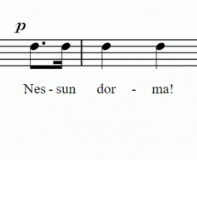No Thai No Farang
-
Recently Browsing 0 members
- No registered users viewing this page.
-
Topics
-
-
Popular Contributors
-
-
Latest posts...
-
150
Israel leveling Gaza
Thank you for that question and to answer it: Because as much as I feel sorry for victims in Darfur and any other place on this globe, where innocent and helpless people are suppressed or even murdered there is one slight, yet important difference to the Genocide in Gaza: MY HOME COUNTRY DOES NOT SUPPORT THE PERPETRATOR WITH MONEY AND WEAPONS THE PERPETRATORS OF THOSE GENOCIDES HAVE NOT CORRUPTED MY COUNTRY`S MORALS AND UNDERMINED MY FREEDOM OF SPEECH. THEY HAVE NOT MADE MY GORVERNMENT CHANGE THE LAWS IN THEIR FAVOR THEY HAVE NOT MADE MY COUNTRY BEING PROCECUTED FOR GENOCIDE OR COMPLICITY TO GENOCIDE: Enough? -
157
Bombshell: Obama & Crew knew all along, Russia Russia was a hoax.
Yes 2020 were the safest elections, and that is why Trump LOST the election. The troll farms were active in the 2016 elections. https://en.wikipedia.org/wiki/Troll_farm https://en.wikipedia.org/wiki/Internet_Research_Agency The agency was first mentioned in a 2015 article by Adrian Chen in The New York Times,[4] which detailed its operations, although it gained further attention when Russian journalist Andrey Zakharov published his investigation into Prigozhin’s "troll factory". The January 2017 report issued by the United States Intelligence Community—Assessing Russian Activities and Intentions in Recent US Elections—described the agency as a troll farm: "The likely financier of the so-called Internet Research Agency of professional trolls located in Saint Petersburg is a close ally of [Vladimir] Putin with ties to Russian intelligence," commenting that "they previously were devoted to supporting Russian actions in Ukraine—[and] started to advocate for candidate Trump as early as December 2015." -
25
Guitar Repair or Luthier In Thialand
Is this "Aleceia Guitar" the same as the Aliceia Guitat Shop you seem to be recommending with this earlier post: -
115
The official sinsod calculator for Thai marriages
This is a common reply among simps who also end up divorced and still pay up sinsod and build properties on "family land". -
60
Triple pricing for BTS/MRT from September
I understand your point. But what we did is just a straight trip from Nonthaburi back to Onnut by mass transport. Nothing circular or back and forth, no detours. Yes, we had to change trains - but even going from Onnut to Saphan Thaksin (where we started to take the boat) we had to change trains (I know, one is from light green to pink, another one from light green to dark green...huge difference). Changing trains in a mass transport network is normal. The price, after all, was 107 B - and I really couldn't believe it. -
115
The official sinsod calculator for Thai marriages
I can’t imagine why she wanted to divorce you?- 1
-

-
-
Popular in The Pub






.thumb.jpeg.d2d19a66404642fd9ff62d6262fd153e.jpeg)





.thumb.jpeg.42eea318e3350459f0aaaa5460326bca.jpeg)


Recommended Posts
Create an account or sign in to comment
You need to be a member in order to leave a comment
Create an account
Sign up for a new account in our community. It's easy!
Register a new accountSign in
Already have an account? Sign in here.
Sign In Now